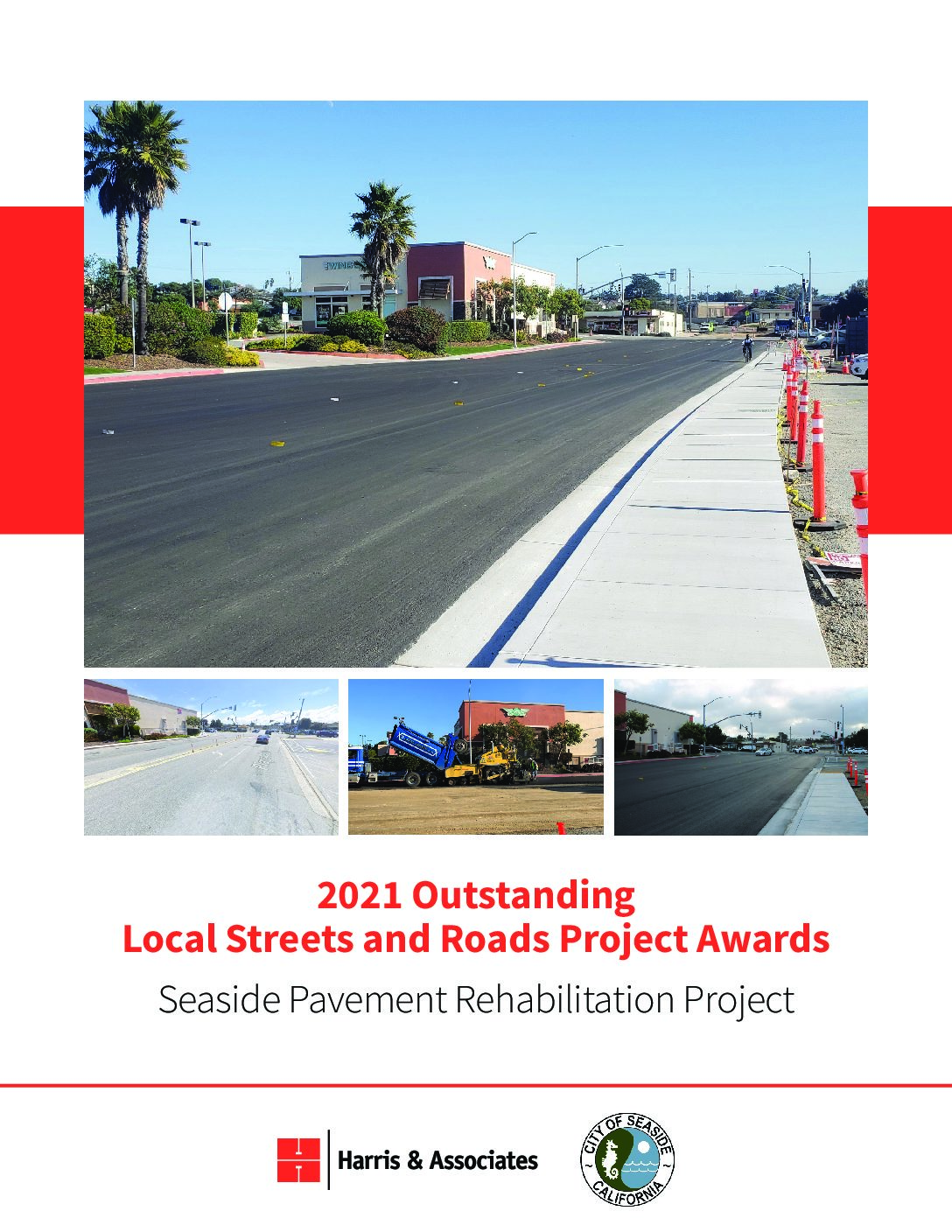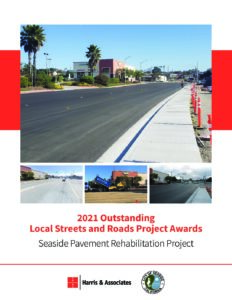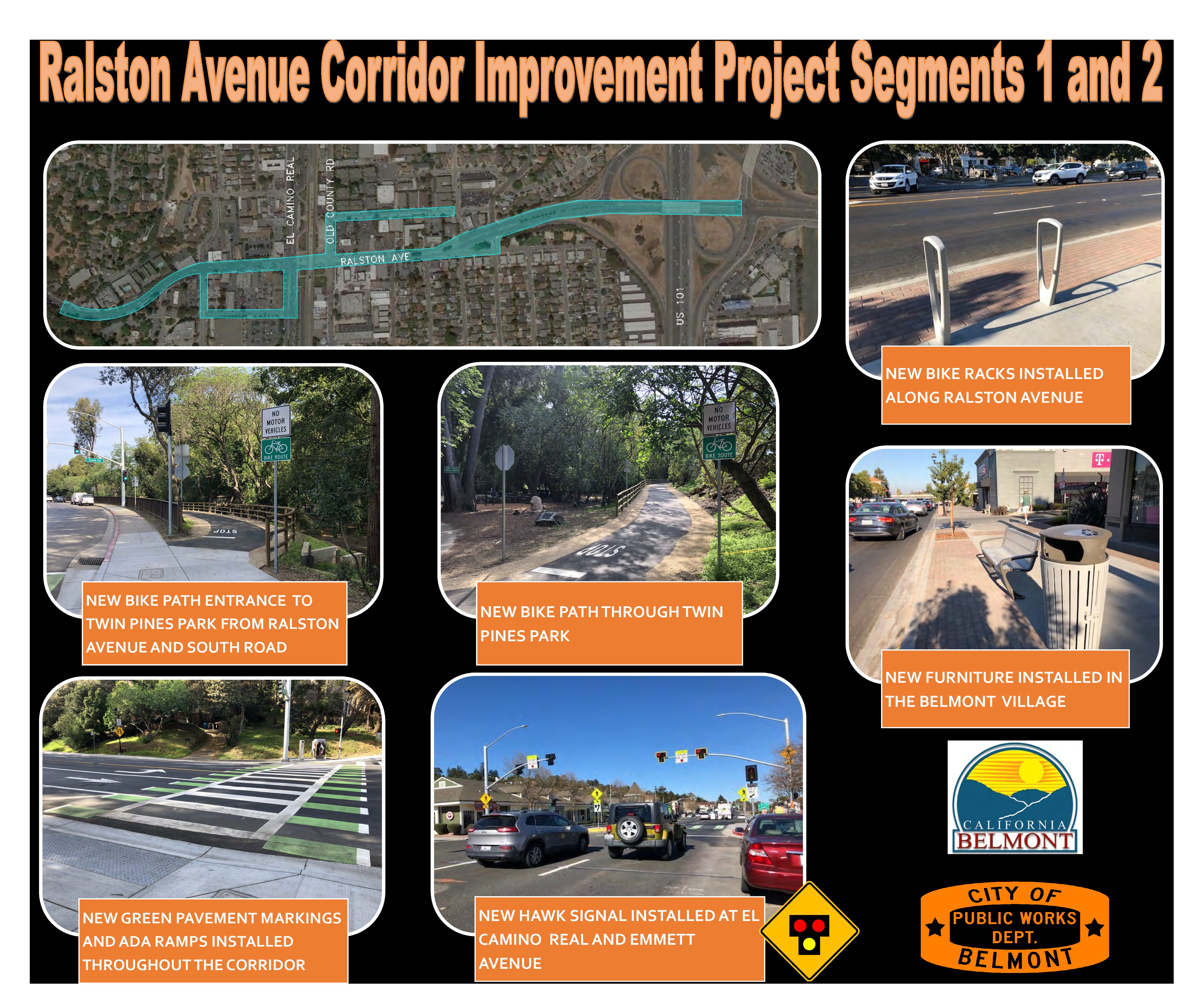Seaside Pavement Rehabilitation Project
Location
N/A, pavement rehabilitation took place on many streets throughout Seaside
City or County Responsible for Project
City of Seaside
Category
Roads: Efficient and Sustainable Road Maintenance, Construction and Reconstruction Projects.
Author
Scott Ottmar
Organization
City of Seaside
Address
440 Harcourt Avenue, Seaside, CA 93955
Phone
831.899.6884
Project Description
The Seaside Pavement Rehabilitation Project was a $9 million project that included pavement rehabilitation of approximately 49,500 linear feet of streets and roads throughout the City of Seaside. The design was performed in two phases and included improved drainage and ADA facilities for several areas. The initial phase included less complex improvements to the roadways (e.g., slurry seals) to prepare the community for construction and show quick and efficient progress. The second phase was more difficult because it involved older streets and incorporating necessary ADA ramps and improving existing drainage issues, resulting in the installation of bulb-outs. Constructing curb ramps at different locations throughout the City that previously did not have any existing ramps increased safety and made it possible for people in wheelchairs to traverse the sidewalks instead of having to use their wheelchairs on the road. The project was well received by the community, including the City receiving many notes of thanks from residents. Funding for the design and construction came from local bond proceeds secured by Measure X and from Senate Bill 1 (SB-1). The project is substantially complete and expected to be finalized end of March 2021. Safety Goals: The project enhanced pedestrian access along highly traveled roadways through the installation of ADA compliant ramps and the installation of bulb-outs. The bulb-outs serve as traffic calming measures by creating a tighter corridor at the intersections, which cause vehicular traffic to slow as they approach them. In addition, due to the installation of bulb-outs, conveyance of surface drainage was improved by installing additional drainage inlets at the intersections, improving the dry lane width during rain events. Preservation & Sustainability Goals: The project included the use of Full Depth Reclamation (FDR) Method to rehabilitate some of the most degraded roadways in the community. FDR is a more sustainable pavement rehabilitation method that involves recycling an existing deteriorated asphalt surface and its underlying base, subbase, and/or subgrade materials into a new stabilized base layer. The FDR process consists of the in-place pulverization of the existing roadway materials, applying and uniformly blending in portland cement and water, compacting with rollers, shaping with motor graders, and proper curing. The result is a stiff, stabilized base layer that is ready for a new bituminous or concrete surface course. FDR with cement saves money and reduces the carbon footprint of roadway construction projects by reducing mining, hauling, and disposal of basic construction materials.




Add Comment